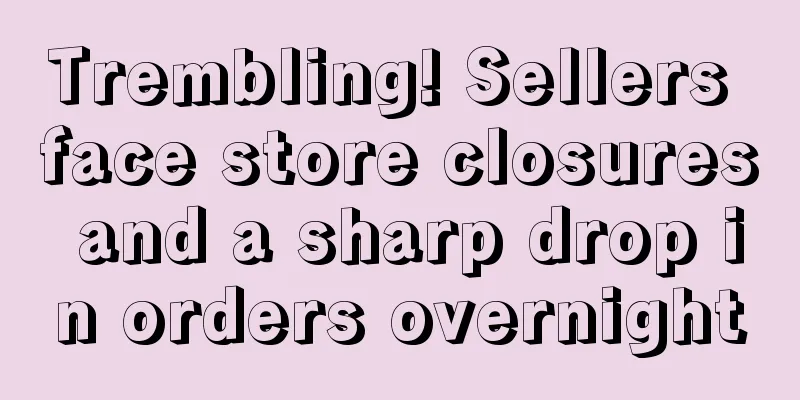Over 158 million people will go shopping! The US Super Saturday shopping festival is coming!

|
According to the annual consumer survey of the National Retail Federation and Prosper Insights & Analytics, more than 158 million consumers will shop on the last Saturday before Christmas (December 17), also known as "Super Saturday" this year. This number is about 10 million more than the number of shoppers on Super Saturday in 2021, and it is also the highest number since NRF first began tracking this data in 2016. Of the 158.5 million consumers who plan to shop on Super Saturday, 44.1 million (28%) plan to shop in-store, 42.2 million (27%) plan to shop online and 72.2 million (46%) plan to shop both in-store and online. The survey found that, consistent with trends in recent years, U.S. holiday shoppers had completed about half (53%) of their purchases by early December, and next planned to complete their final shopping online (47%), at department stores (37%), discount stores (27%), clothing/accessories stores (24%), and grocery stores (19%). By far the most popular gift items purchased by consumers include clothing (50%), toys (34%), gift cards (28%), books and media (26%), and food or candy (23%). This year, 28% of holiday shoppers plan to give an experiential gift, such as a concert or sporting event ticket, gym membership, spa service or art class. That's up from 23% last year and the highest number since NRF began asking the question in 2015. The survey also found that consumers are shifting the way they pay for holiday purchases. About half (52%) of consumers said they are using an alternative payment method or digital wallet, up from 44% last year and just 39% in 2019. The most common alternative payment method is PayPal (32%), followed by Apple Pay (14%) and CashApp (12%). Among 18 to 24 year olds, about three-quarters (76%) said they used an alternative payment method or digital wallet this holiday season. Notably, 70% of Americans said they would make purchases after Christmas on December 25, a proportion comparable to levels during the pandemic. “The post-Christmas shopping season is about to pick up again in the U.S. as holiday shoppers look to take advantage of retailers’ sales and promotions to spend big,” said Phil Rist, executive vice president of strategy at Prosper. “The week after Christmas will see consumers maximize discounts and offers to buy things, use gift cards and return or exchange unwanted gifts.” The NRF defines the holiday season as November 1 to December 31, and predicts that U.S. retail sales this holiday season will increase 6% to 8% from 2021, to $942.6 billion to $960.4 billion. Editor ✎ Nicole/ Disclaimer: This article is copyrighted and may not be reproduced without permission. |
<<: 2023 Overseas Guide: US Market Trends and Marketing Focus
>>: Twitter Blue is back for $8 on Android, $11 on iOS
Recommend
What is WishPost? WishPost Review
WishPost is a cross-border e-commerce logistics pr...
What is Orange sellers? Orange sellers review
Orange sellers is an Amazon accelerator . About Or...
From a star product to a dead product, the secret of Meisen's "fall" is revealed
From a glorious moment to obscurity, It took just ...
Effective September 24! Amazon enforces new rules for cosmetics
Normal, once there is data abnormality, such as s...
These Amazon ad locations have been removed! Sellers are happy or worried...
Amazon's own brands are now in a precarious si...
Forced to pay 5 times the fine, the seller tearfully accuses Temu of nine sins
Under the Super Bowl effect, Temu's soaring mo...
YouTube is the most popular social platform for Generation Z in the United States! TikTok ranks second!
<span data-docs-delta="[[20,"YouTube是Z世代最偏...
What is the EPA Pesticide and Equipment Registration? EPA Pesticide and Equipment Registration Review
The Environmental Protection Agency (EPA) is a fun...
What is STL International Logistics? STL International Logistics Review
STL International Logistics has offices in Rotterd...
Amazon strikes hard! Multiple service providers arrested
Let’s start today’s main text. ◆ ◆ ◆ ◆ In May of ...
What is Retail E-Commerce? Retail E-Commerce Review
The retail industry is an important way to realize...
Times have changed! Amazon Black Friday will be on November 29th, and multiple platforms will rush to launch big sales
Normal, once there is data abnormality, such as s...
US holiday e-commerce sales will achieve double-digit growth! These categories have strong demand
It is learned that according to eMarketer's fo...
Wedding boom in the US! Sales to exceed $68 billion in 2022!
<span data-shimo-docs="[[20,"获悉,根据婚礼策划网站Th...
What are negative keywords? Negative keywords evaluation
Negative keywords are a great way for Amazon selle...









